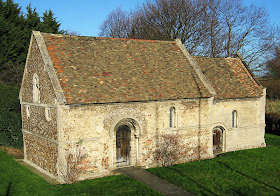In the month of September, Stourbridge Common on the outskirts of Cambridge is a lush and pleasant water meadow, frequented by dog walkers, morning joggers and nonchalantly masticating cattle. Scroll back to this very spot several hundred years ago and the air would have been rich with the sounds of tradesmen’s animated chatter, the sawing and hammering of timber, and travelling people tramping down the rough road. Barges and wherries laden with goods would have replaced the sleek college eights skimming the River Cam. Out on the field, carefully measured rows of wooden booths were multiplying, assembling the streets of the most renowned medieval hub of trade, entertainment and revelry: Stourbridge Fair.
For hundreds of years the area known as Stourbridge Common was home to possibly the largest fair of medieval Europe; now all that remains is just a scattering of street names in the east of Cambridge. Garlic row, Mercers Row and Oyster Row are tastes of the huge range of produce bought and sold at this momentous annual event.
The Fair dates back 800 years to 1211, when King John issued a Royal Charter giving the Leper Chapel at Steresbrigge the right to hold a small fund-raising fete. Built on the boundary of Cambridge, the Chapel was part of an abbey that provided care for Cambridge town’s sick and contagious. Growing steadily, the Fair became immensely popular and enticed crowds from all over the country: craftsmen, tradesmen, travellers, nobility, intellectuals, and some of the most famous names in history. For a few weeks a year, it transformed this grazing common into a lively, industrious destination. In 18th century writer Daniel Defoe’s words, Stourbridge Fair became “not only the greatest in the whole nation, but in the world”.
Click here to read this article from the University of Cambridge
